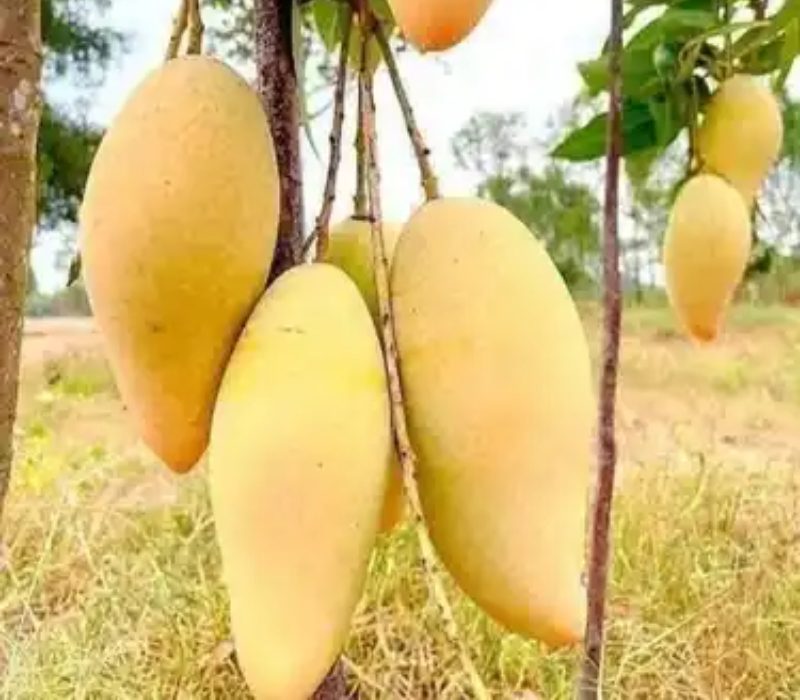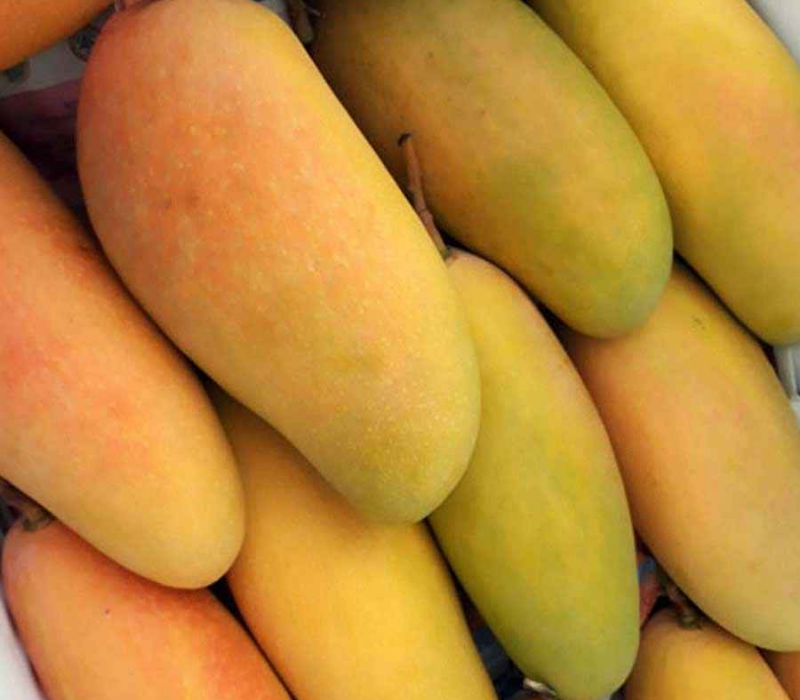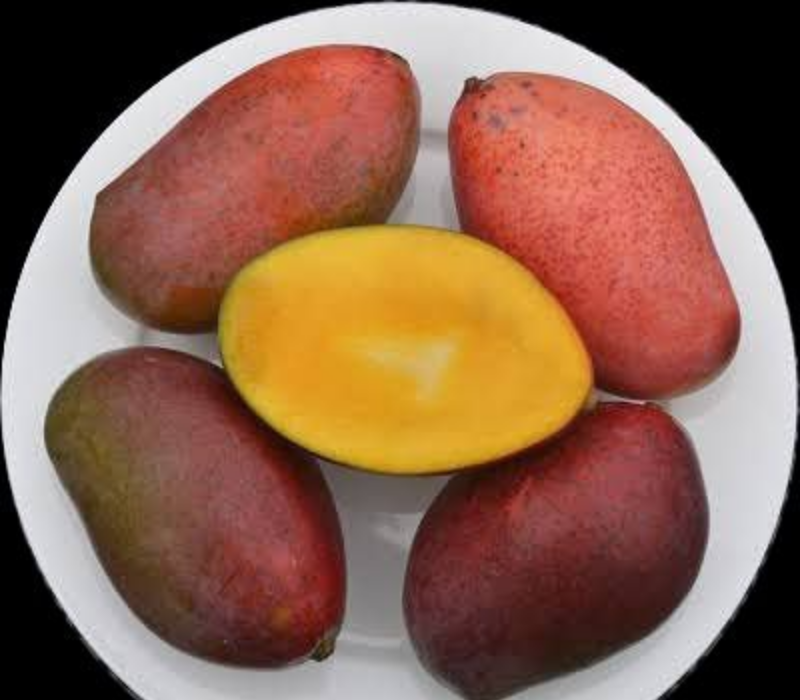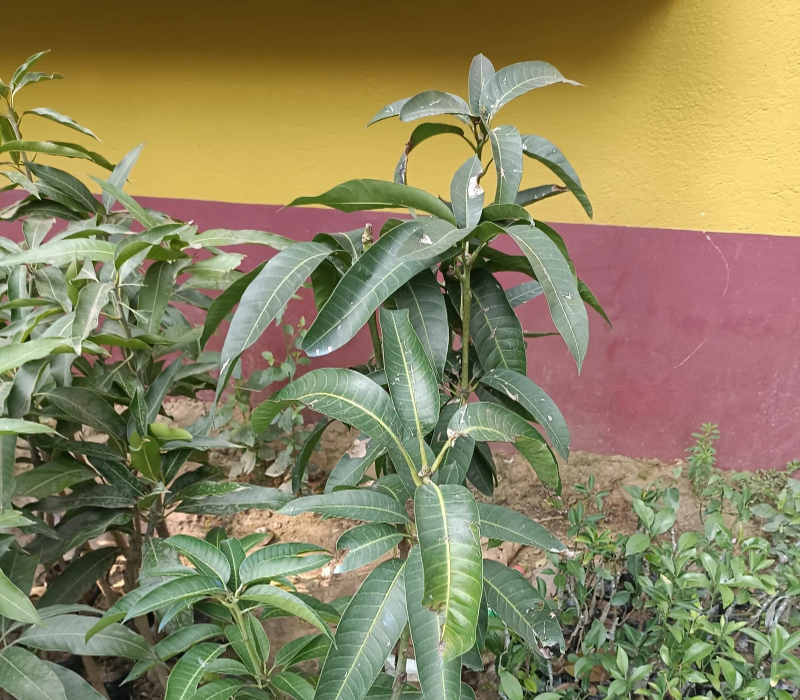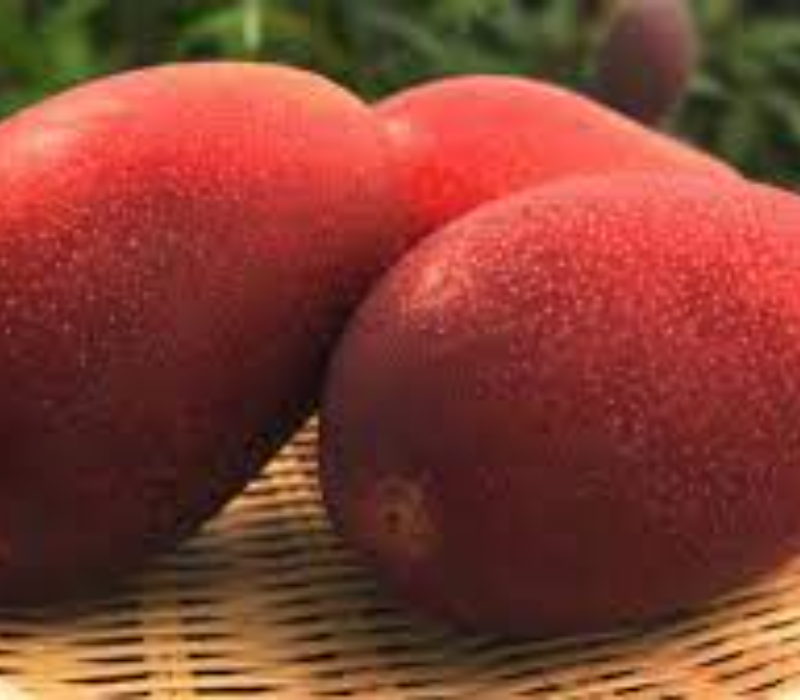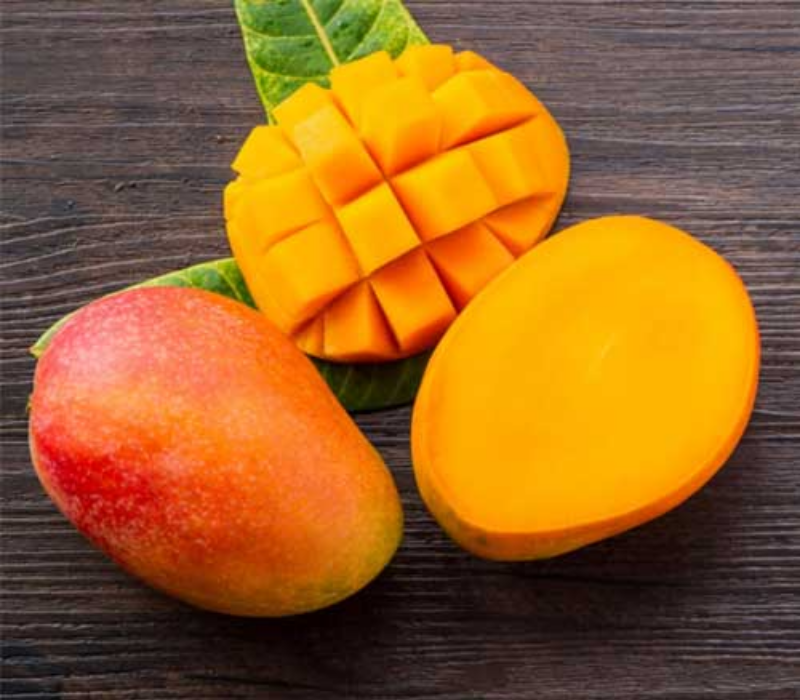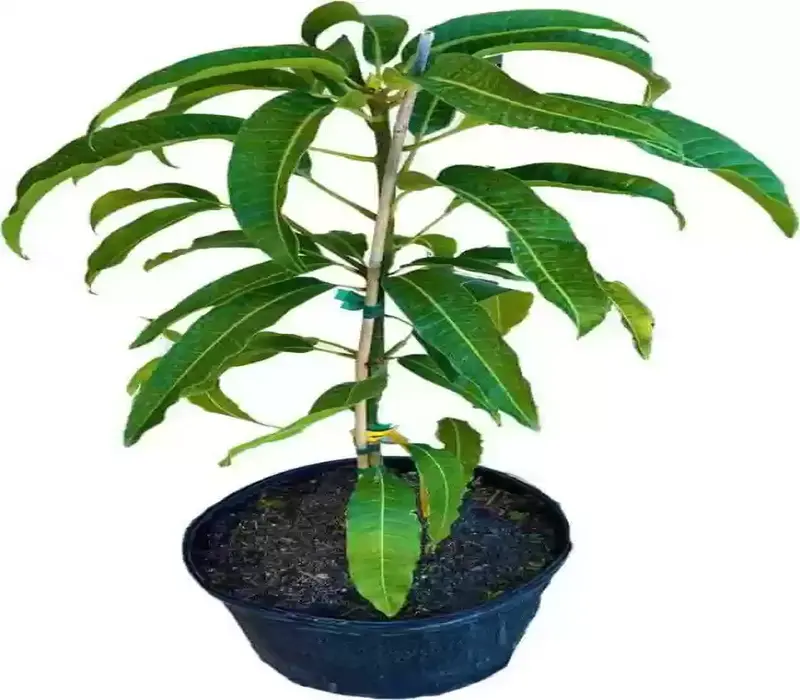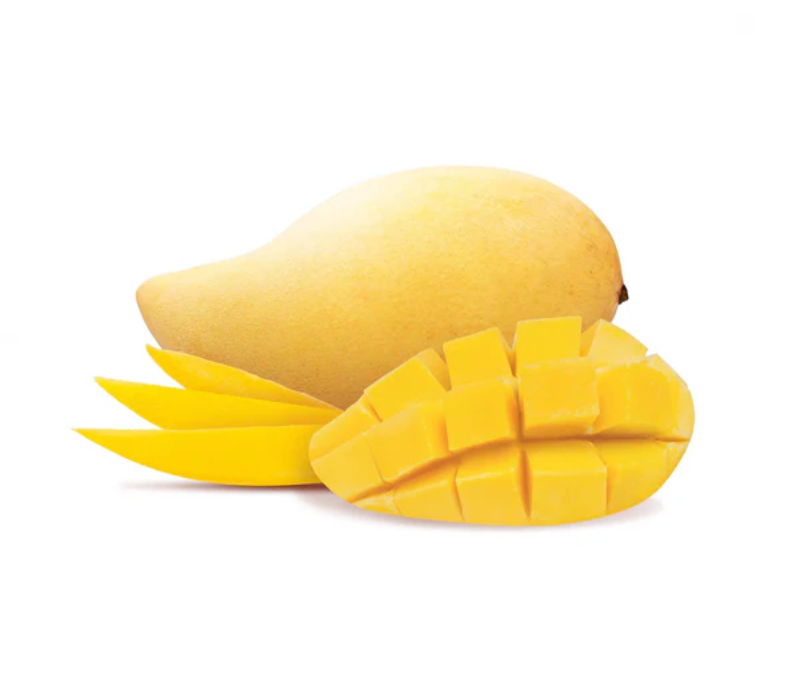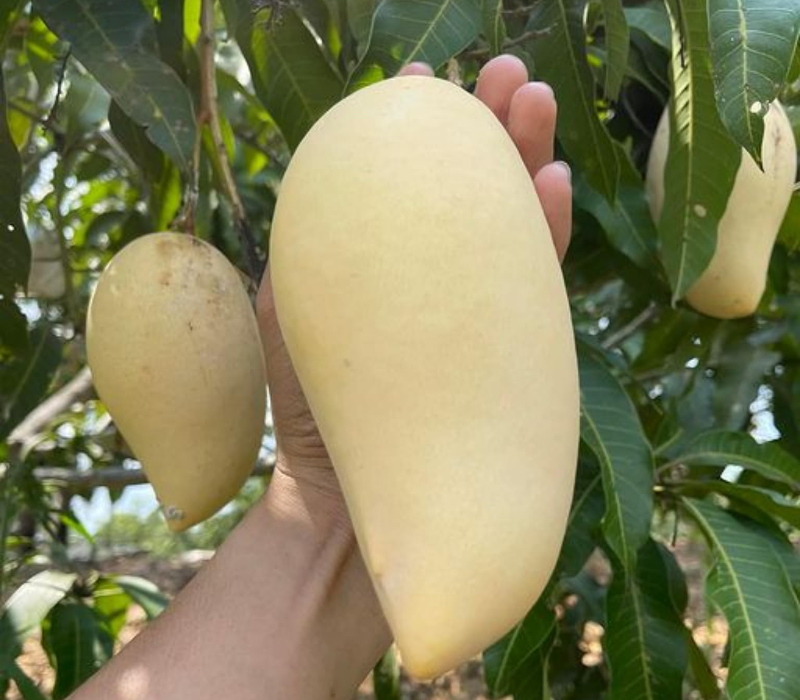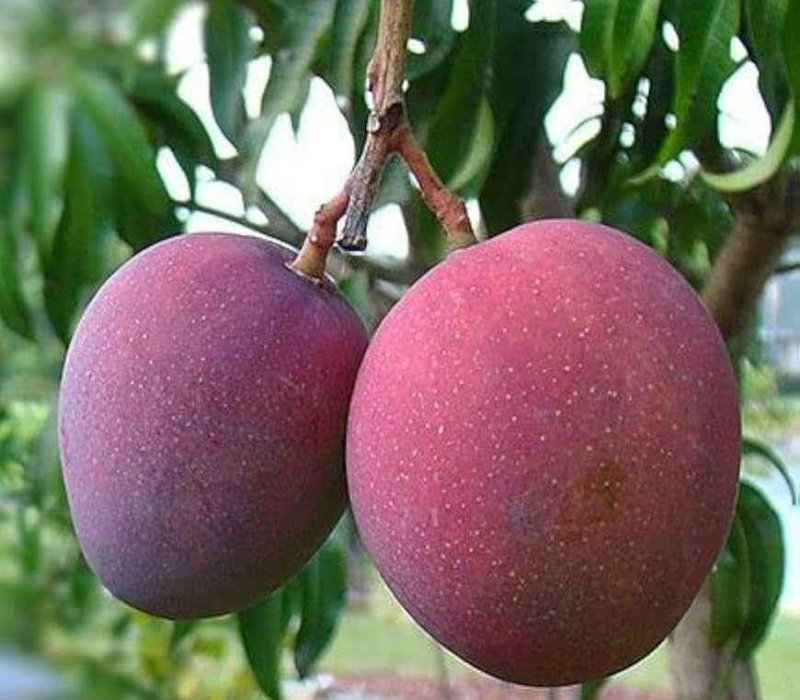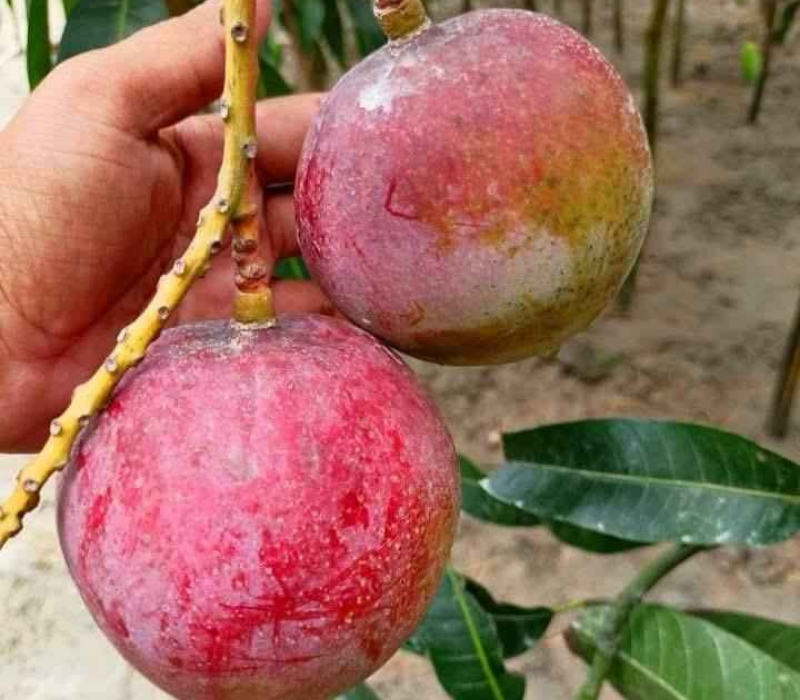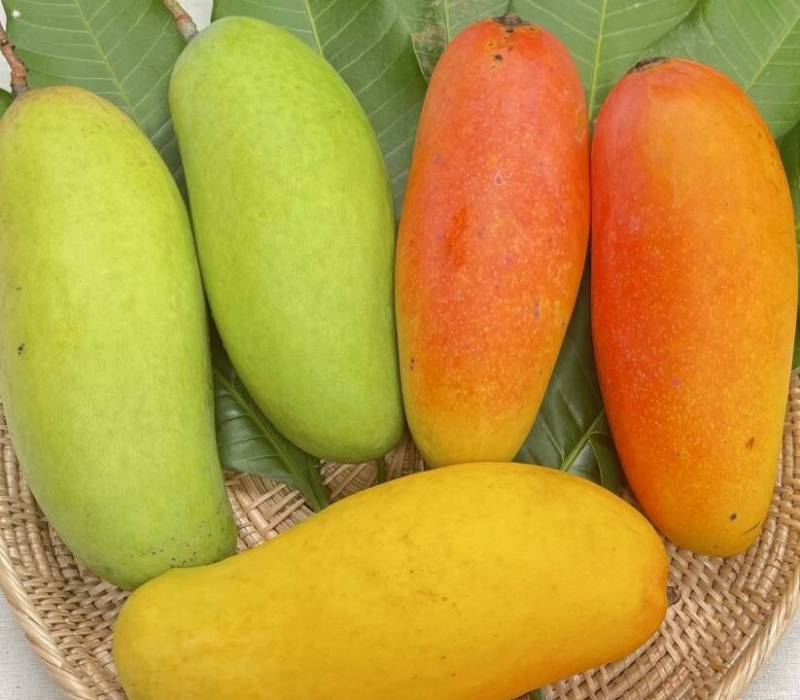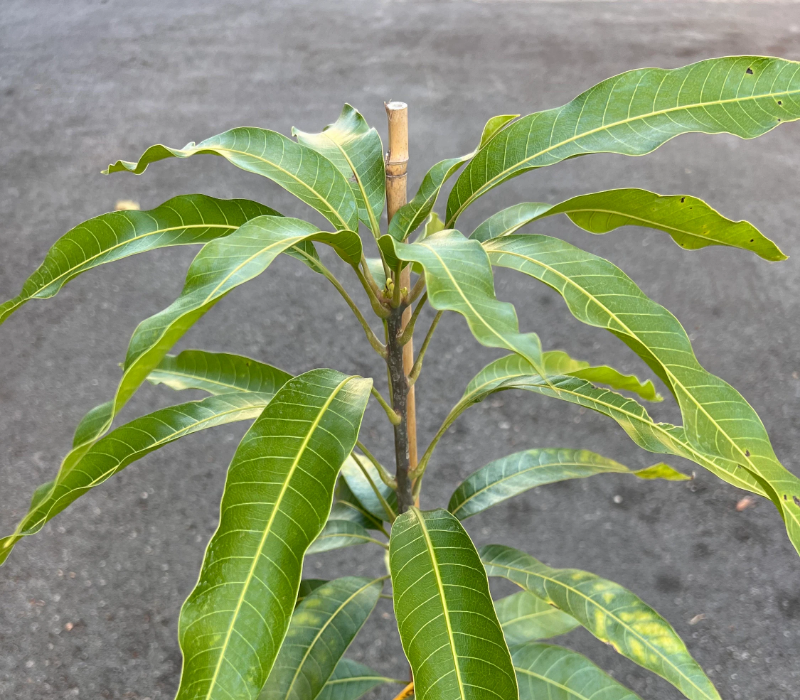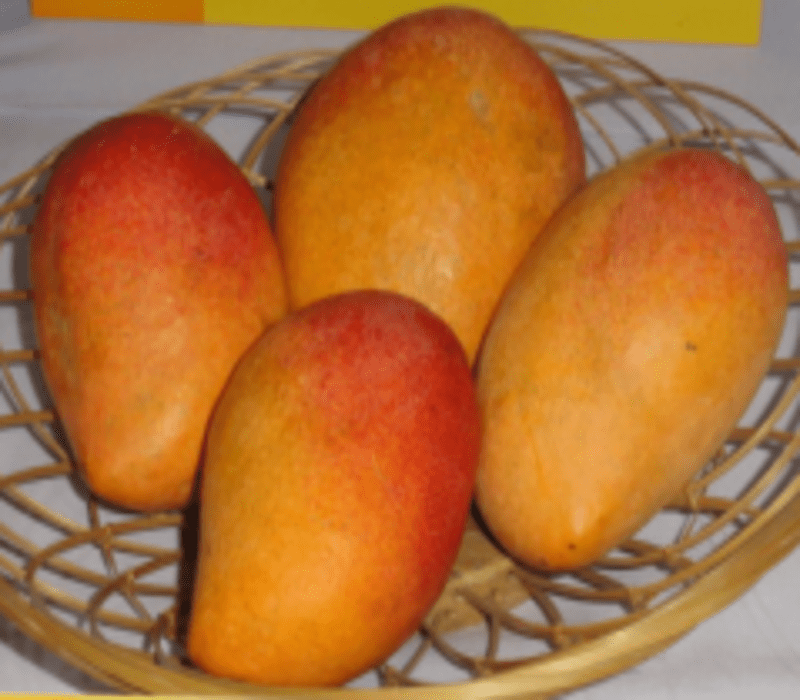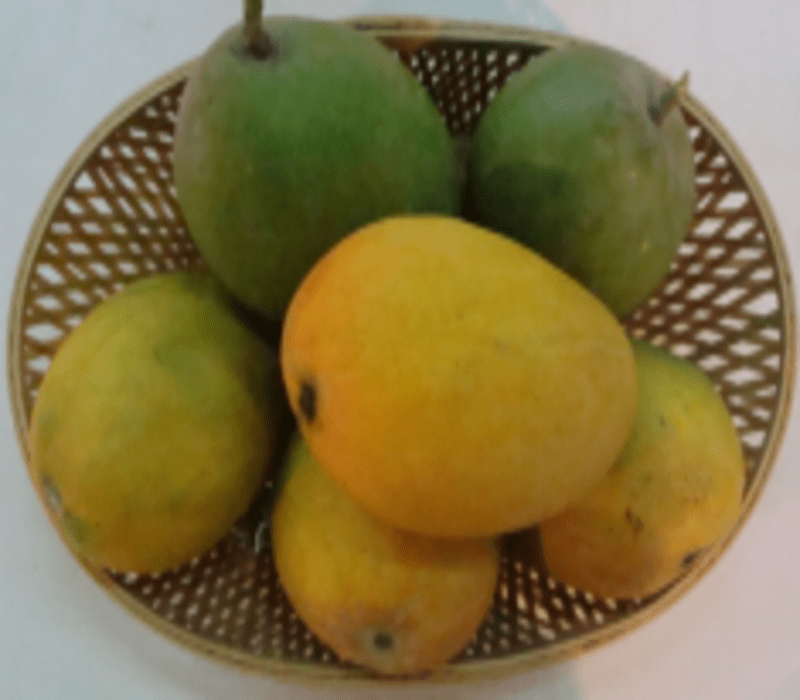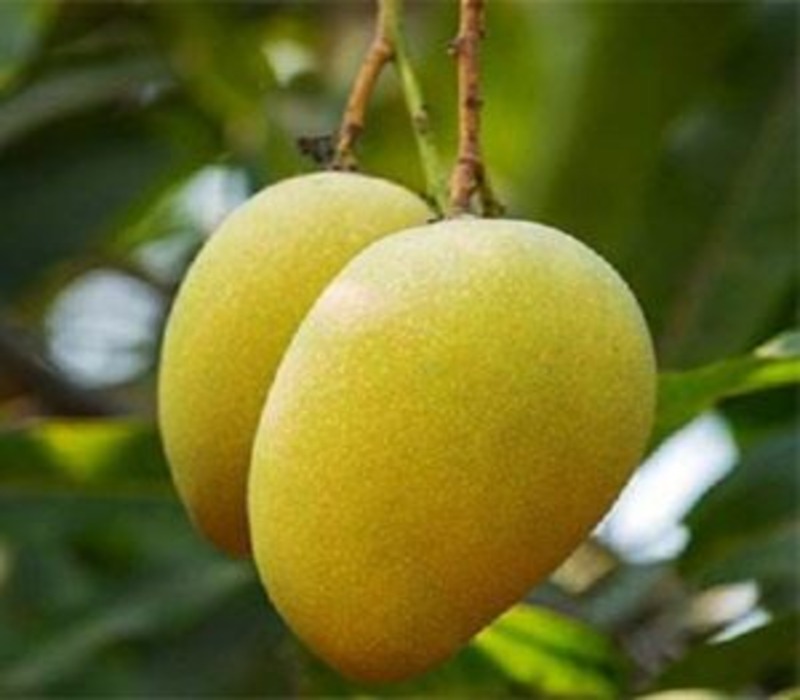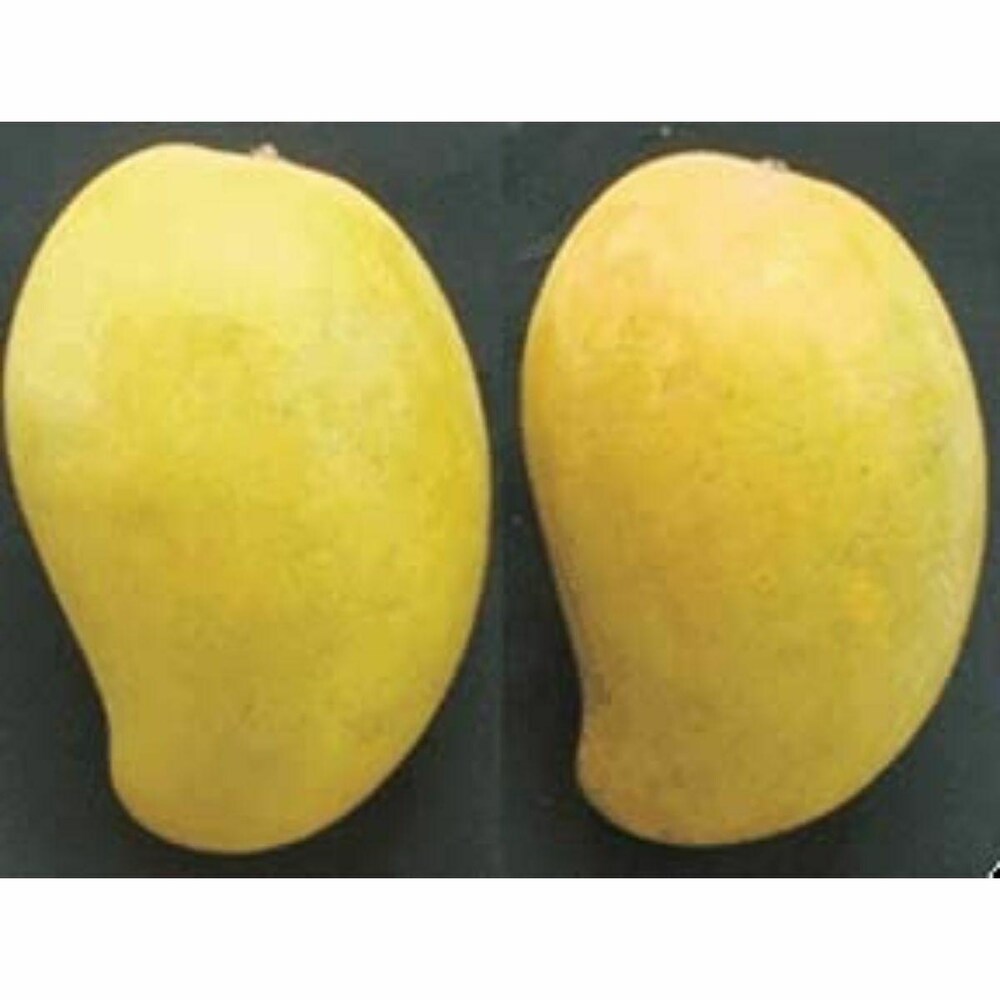✅ American Palmer Mango Profile:-
🟡 Origin:
-
Developed in Florida, USA, around the mid-20th century.
-
Believed to be a seedling of the Haden mango, selected for commercial potential due to its size and storage life.
🍭 Taste:
-
Mildly sweet with a sub-acid tang, making it refreshing and less sugary than ultra-sweet varieties like Alphonso.
-
The taste becomes richer and more aromatic as the fruit ripens.
-
No fiber, making the flesh smooth and buttery.
🎨 Color:
-
Skin is greenish-yellow when immature, ripening to a deep red to purple blush on the sun-exposed side, and golden yellow on the shaded side.
-
Flesh is deep orange-yellow and visually appealing.
⚖️ Weight & Size:
-
Large-sized mango, typically weighing between 600 to 1,000 grams (0.6 to 1 kg).
-
Elongated oval to oblong shape.
🍬 Brix (Sweetness Level):
-
Brix content ranges between 16 to 18° Brix, indicating moderate to high sweetness.
-
Sweetness improves significantly when fully tree-ripened.
🍯 Sweetness Profile:
-
Less cloying than Indian varieties like Dasheri or Langra.
-
Balanced sweetness with a light tropical tang.
-
Ideal for those who prefer non-overpowering sweetness with subtle complexity.
🧵 Texture:
-
Fiberless, smooth, and firm flesh.
-
Excellent for fresh consumption, salads, smoothies, and slicing.
Would you like a comparison of Palmer with another mango like Kent, Tommy Atkins, or Nam Dok Mai?







